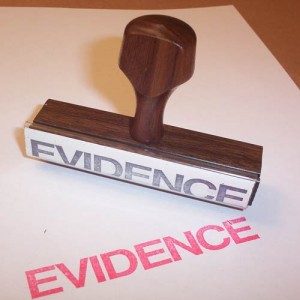Discovery
Discovery is pre-trial investigation. It allows you to get either evidence itself, or information that will lead to getting the evidence you need. There are rules for how much time you have to do things, and how many questions you can ask in a certain way. Some common Discovery methods are:
Deposition:
A deposition is written or oral testimony given under oath in front of a court reporter. These take place outside of court and allow the parties to get a record of a person’s testimony, or to get testimony from a witness who lives far away. The person who sets up the deposition pays the court reporter’s fees.
Interrogatories:
Interrogatories are written questions sent by one side in a lawsuit to an opposing side. The side that receives the interrogatories must answer them in writing under oath, or give a legal basis for not answering them.
Request for Admission:
In a request for admission, one party formally and in writing asks the opposing party to admit the truth of certain facts relevant to a case.
Request for Production:
One party may ask the other party for specific documents or things. The asking party may object to, copy or inspect these.
Subpoena Duces Tecum:
A subpoena duces tecum is an official court order to bring documents to a specific place at a specific time.
Subpoena
A subpoena is a court order telling a person to go to court at a specific time. They are commonly used to tell witnesses to come to court to testify in a trial. The court has forms you can use to ask for these.
What Does the Court Consider Evidence?
Evidence is information you may present in court to prove your case. It can be in two main forms:
People: witness testimony
• You
• Other people who have direct and relevant information about the case
• People who keep records
• Experts
Things: exhibits
• Photographs
• Records: police, medical, bills, appraisals, school records, etc.
• Other documents or things
Rules of Evidence
There are rules of evidence that everyone must follow. These rules help ensure that the judge gets reliable, relevant and accurate evidence to consider when making decisions about your case.
Among the most important of these rules are:
• Generally, people can only talk about what they know first hand – what they themselves saw, heard, felt, smelled, or tasted. (There are some exceptions to this rule.)
• The other party has the right to cross-examine anyone whose words (whether written or spoken) are being considered.
• All testimony must be relevant information.
Using People as Evidence
A witness is a person called by either side in a lawsuit to give testimony before the judge or jury.
It could be you, other people who have direct and relevant information about the case, people who keep records, or experts who are qualified to give an opinion in an area of the case. Usually, the witness must be present in court for the hearing or trial.
How do I prepare my witnesses for court?
o Write out your questions.
o Practice the questions with your witness.
o Be prepared for cross-examination: talk with your witness about what questions the other side might ask him or her.
Remind your witnesses that they must tell the truth. It is ok to say, “I don’t know” or “I don’t remember,” if that is the truth.
How do I prepare my exhibit for court?
Once you have selected what you want to use:
• Make two copies of each exhibit – one for the other party, and the other for you. (The court will keep the original.)
• Ask a court clerk how to mark your exhibits.
* Some courts will want you to mark each piece of evidence with an exhibit identifier. (For example, attach a sticker labeled
“Exhibit 1,” “Exhibit 2”, etc. – OR “Exhibit A,” “B,” etc. The clerk can tell you which to use.)
* Some courts will mark the exhibits in court.
How do I introduce an exhibit in court?
To show the court one of your exhibits:
1) First, show the exhibit to the other party (or the other party’s attorney),
2) Next, either you or your witness must testify about the exhibit to show that the evidence is relevant to your case and is authentic (not made up).This is called “laying the foundation.”
3) Ask the court to admit the exhibit into evidence.
The other party or attorney may object to the exhibit for some reason. Try to answer these objections as best you can. Finally, the judge will decide whether to allow the exhibit or not.
Fight the Essential Fight, Boiler
